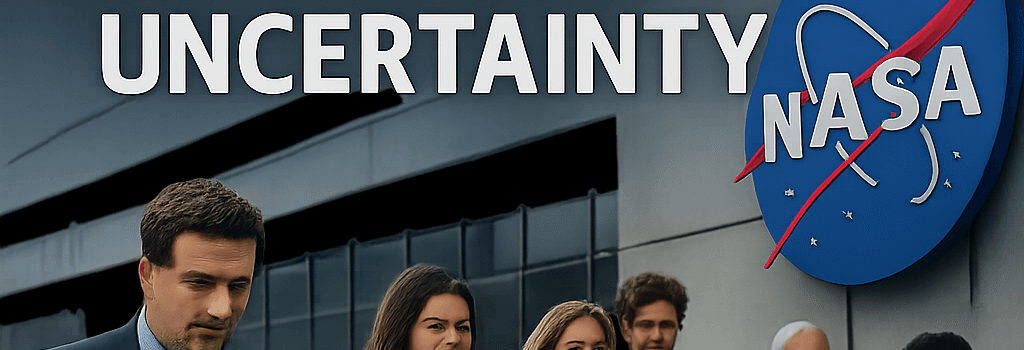3,000 NASA Employees Leave Amid Budget Uncertainty

On July 21, 2025, NASA confirmed that Makenzie Lystrup, director of the Goddard Space Flight Center, will step down on August 1. Her departure adds to an exodus of nearly 3,000 civil servants and contractors since the Trump administration proposed a 25% cut to the agency’s fiscal year 2026 budget.
Lystrup has led Goddard since April 2023, overseeing 8,200 staff and a $4.7 billion annual budget. Goddard is NASA’s largest science center, developing and operating flagship observatories like the James Webb Space Telescope (JWST) and Hubble Space Telescope, and assembling the Nancy Grace Roman Space Telescope for its 2026 launch.
“We’re grateful to Makenzie for her leadership at NASA Goddard, inspiring a golden age of explorers, scientists, and engineers,” said Vanessa Wyche, NASA’s acting associate administrator.
Context of the Workforce Exodus
NASA’s attrition rate has spiked to over 5% agency-wide, driven by early retirement offers, buyouts, and voluntary separations. In recent months:
- Goddard lost 3.8% of its workforce, including engineers, data scientists, and project managers.
- Jet Propulsion Laboratory (JPL) experienced a 4.5% turnover after director Laurie Leshin’s June departure and last year’s 10% layoffs due to Mars Sample Return budget uncertainty.
- Marshall Space Flight Center and Johnson Space Center each saw 2.5–3% workforce reductions through buyouts.
These numbers come as NASA prepares to operate under a proposed $18.8 billion budget—down from $25 billion in 2025—pending congressional appropriations.
Formal Dissent and Policy Pressure
Hours before Lystrup’s resignation announcement, hundreds of current and former NASA employees signed the “Voyager Declaration,” an open letter to interim Administrator Sean Duffy. The letter warns of “rapid and wasteful changes” that threaten human safety, scientific advancement, and efficient use of resources. Modeled after dissent letters at NIH and EPA, it urges Congress and the administration to preserve NASA’s mission as authorized by law.
Impact on Key NASA Missions
The proposed cuts endanger dozens of projects across NASA’s Science Mission Directorate:
- Artemis lunar program (exploration systems and Deep Space Gateway development)
- Europa Clipper (JPL-built spacecraft en route to Jupiter, launch January 2026)
- Roman Space Telescope (wide-field infrared imaging, 2026 deployment)
- Mars Sample Return (joint NASA–ESA campaign delayed indefinitely)
- Psyche (metallic asteroid orbiter, new launch window analysis underway)
Goddard contributes subsystem integration, ground-station support, and mission operations for these programs. Budget cuts could force schedule delays, instrument descope, or outright cancellation.
Workforce Trends and Retention Strategies
NASA’s human resources office reports:
- An increase in voluntary retirements—from 350 in FY2024 to over 800 projected in FY2026.
- Higher contractor-to-civilian ratios as centers attempt to maintain critical skills through flexible contracting.
- Implementation of a talent redeployment program to shift staff from low-priority projects to Artemis and Earth science missions.
Experts recommend bolstering telework capabilities and expanding partnerships with university consortia to fill specialized roles in optics, cryogenic engineering, and data analytics.
Policy, Legal Implications, and Expert Commentary
Congressional appropriators in the House and Senate have passed NASA spending bills near the $25 billion mark, but face a presidential veto risk. Legal scholars warn that using impoundment to withhold funds could prompt a constitutional challenge over executive versus legislative allocation powers.
“If the administration impounds funds, NASA will enter uncharted legal territory,” said Dr. Alyssa Rodriguez, space policy expert at the Brookings Institution. “This could stall missions for years and undermine U.S. leadership in space.”
Looking Ahead
Cynthia Simmons, Goddard’s deputy director with 25 years at the center, will serve as acting director. NASA’s leadership is preparing for transitional hiring freezes, prioritized mission funding, and enhanced congressional outreach to secure stable budgets into the next authorization cycle.
As NASA grapples with departures and fiscal uncertainty, the resilience of its workforce and the fate of high-profile missions will shape the agency’s trajectory through the late 2020s.